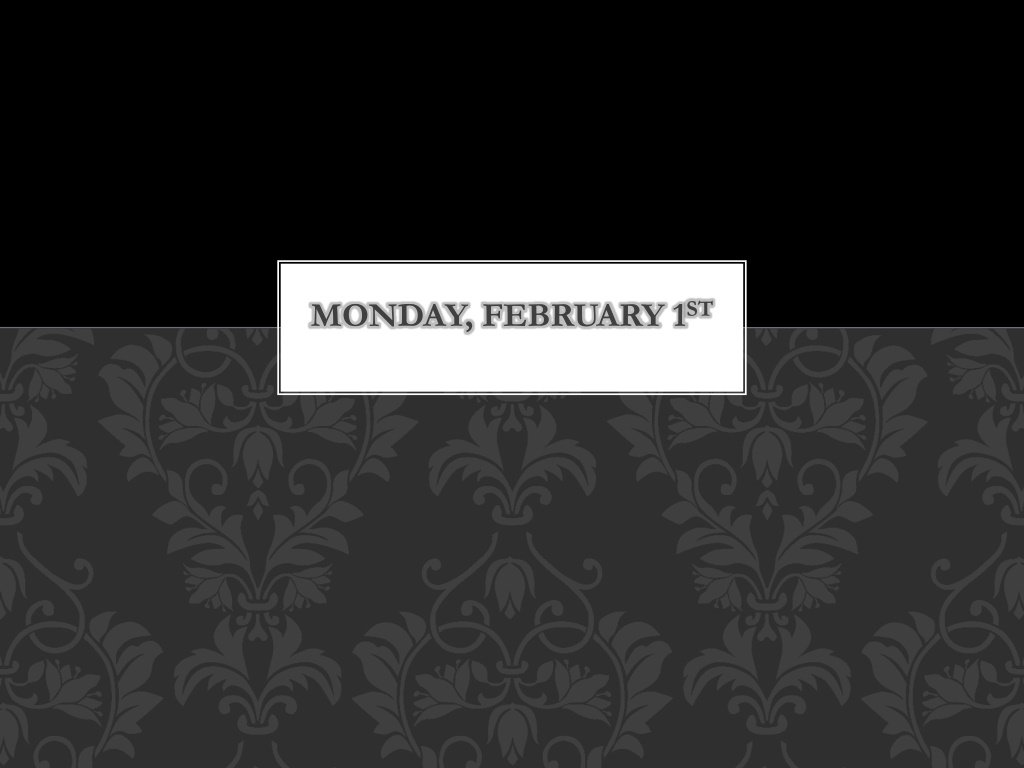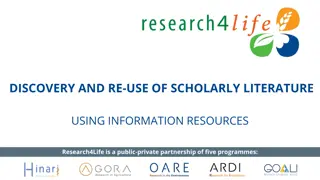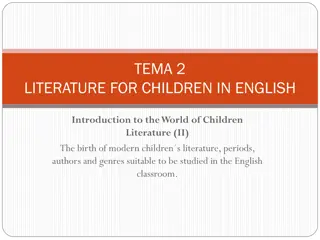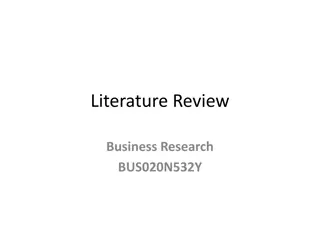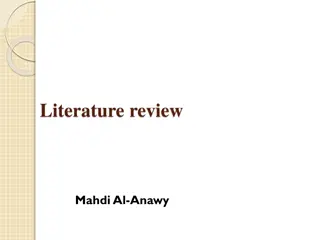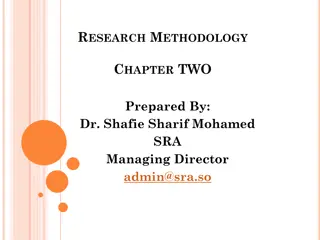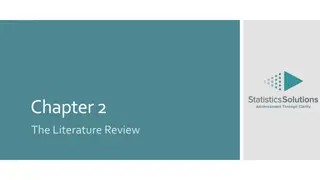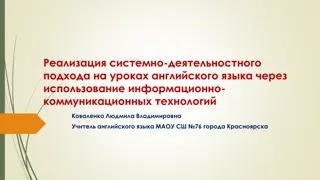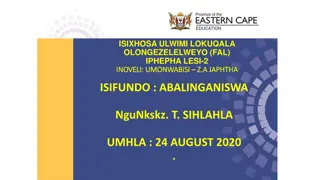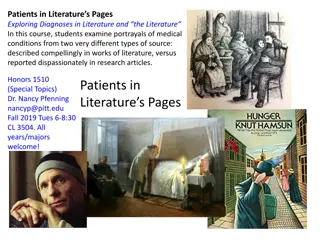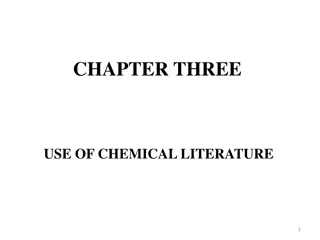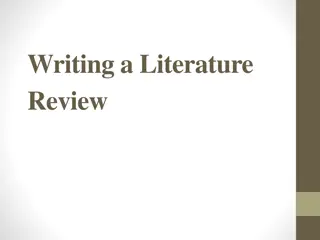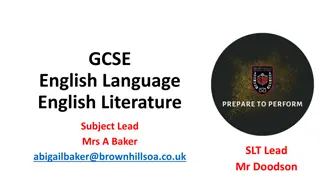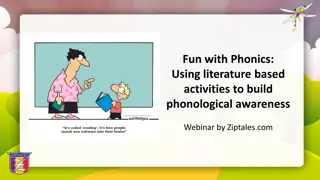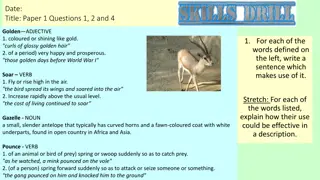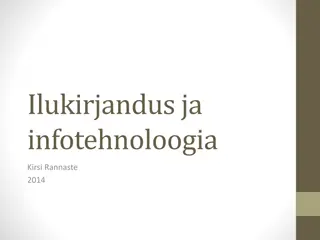Engaging Literature Analysis Activities for Effective Learning
Explore activities like daily edits, memoir writing, annotation, vocabulary exploration, and identifying author's purpose and tone to enhance literary understanding. Encourage critical thinking and text analysis through engaging tasks.
Download Presentation

Please find below an Image/Link to download the presentation.
The content on the website is provided AS IS for your information and personal use only. It may not be sold, licensed, or shared on other websites without obtaining consent from the author. Download presentation by click this link. If you encounter any issues during the download, it is possible that the publisher has removed the file from their server.
E N D
Presentation Transcript
DAILY EDIT: READ THE FOLLOWING SENTENCES AND MAKE THE NECESSARY CORRECTIONS: 1. During the two hour storm me and him was in an a fishing boat on the Chesapeake bay. 1. In English class we discussed this quotation from Benjamin franklin it is hard for an empty bag to stand upright
SIX WORD MEMOIR Use the next five minutes to compose a six word memoir try to sum up who you are in six words. Write it on the right or left hand side of your index card. You can make it funny or reflective whatever is true to who you are. Examples: The experience was worth the risk I can do it in five. I did not plan for this. When you are finished, get your picture from me and glue that onto the other side of your index card
ANNOTATION The Carnal or Courtly Love of a Book
CARNAL Use pen or pencil and highlighter to write directly in the text or in the margins, circling, underlining, highlighting.
COURTLY Use sticky notes or post-it notes to do the same thing. Do not deface the book.
VOCABULARY Make a list of unfamiliar words
IDENTIFY THE CLAIM The main message, the thesis. Can you find textual evidence that states or implies the main idea?
IDENTIFY THE AUTHOR S PURPOSE Is the author trying to entertain you, persuade you, inform you, frighten you, or something else?
WHAT IS THE AUTHORS TONE? The author s tone is his/her attitude. Is it genuine, heartfelt, sympathetic, snarky, cynical, sardonic, ashamed, humorous, ironic or something else?
WHAT ABOUT THE DICTION? What words does the author use to create the tone? How would you label those words? Are they formal? informal? Slang? Distinguished? Proper? Colloquial? Jargon? Religious? Jingoistic?
WHAT ABOUT SYNTAX? How does the writer arrange the words into sentences and paragraphs? Does she/he use a combination of simple, compound, and complex sentences? Are some paragraphs pages long while others are merely one sentence, or even one word ?
WHAT ABOUT LITERARY DEVICES? Does the writer use devices for MEANING like similes? Metaphors? Hyperbole? Personification? Does the writer use devices for SOUND like rhyming, consonance, assonance? Off rhyme or slant rhyme?
PUTTING IT ALL TOGETHER How does the author use literary devices, syntax, and diction to create a tone and support his/her claim?
ANNE FADIMANS YOU MUST NEVER DO THAT TO A BOOK Turn to the person next to you and work together to read the essay aloud (you can break up the reading however you like). As you read: Think about the information we ve covered about annotation, and try to read aloud in a way that best captures the tone that author favors in order to support her claim.
NOW THAT YOU HAVE HEARD READ THE ARTICLE ALOUD: Consider all the information on the preceding slides as they pertain to the essay, and think of how you captured those elements aloud. Then, complete the following statement: Fadiman uses ________ (literary devices), _________ diction, ________ and _________syntax to create a ___________ tone to support her claim that ______________.
READ THE WORLD ON THE TURTLE S BACK As you read, I ask you to practice courtly annotation: use a separate piece of paper (be it in your journal or in your binder) to write down your annotations. Be sure to include the coordinating page numbers. Example: The use of symbolism helps this author better convey this culture s perception of nature: it is helpful and harmonious, and each creature works together (pg 27). As you read ask the following questions: What kind of myth is this? What does it tell us about the culture this myth is part of? What stories is this similar to? Why is this significant?
JOT DOWN WHAT YOU ALREADY KNOW: What do you already know about Native American culture? How would you describe the relationship between Native Americans and nature? How would you describe the relationship between Native American culture and the American culture and government?
